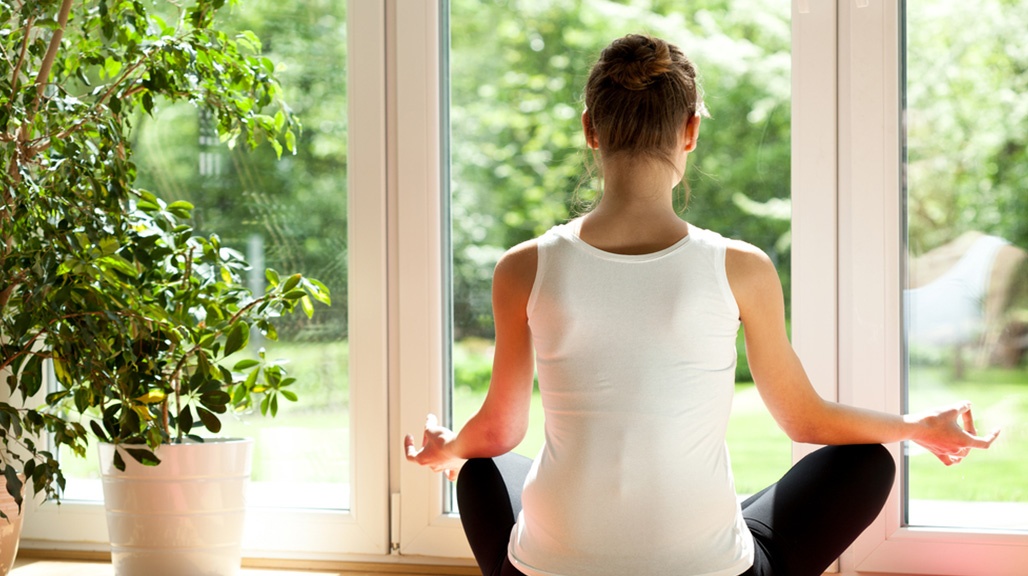A Meditation Space in Your Home
 Contributed by
Pamposh Dhar*
December 30, 2016
Contributed by
Pamposh Dhar*
December 30, 2016

The regular practice of meditation brings many benefits for our physical and mental well-being – not to mention our spiritual growth.
Occasional meditation helps us to clear our head and feel less stressed, while a regular practice can turn us into calm and clear-headed people, at peace with ourselves.
It can be a struggle for beginners to maintain a regular practice. There is one thing that can make this simple: creating a habit of meditation by practising at roughly the same time and in the same place every day. You could begin by creating a small space in your home that is meant for meditation and related practices such as pranayama (breath work), yoga or Reiki. Before you know it, your mind will begin to see this spot as your special go-to space for these practices.
Find Your Spot
The first step, of course, is to find a good spot. If possible, choose a well-lit room with natural light and air. If you have a garden or balcony, you may like to meditate there. I would suggest you still create a space inside the home for those times when you are unable to meditate in the open because of rain, heat or noise.
A Calm Place
Your meditation spot should be clean and uncluttered. It is a good idea to also cleanse the energies in this room with incense, sage, or crystals. Let it be a place that calms your mind. Create a space to keep essential oils, incense, or a scented candle of your choice. Add anything else that you associate with meditation.
Connect With The Five Elements
Doing yoga or mediation in nature can very quickly lead to a sense of oneness, and should be done as often as possible. According to ancient yogic beliefs, humans and nature are made up of the same five elements, called tatvas in Sanskrit: agni (fire), vayu (air), prithvi (earth), jala (water) and akasha (ether).
Try to find a way to connect with the five tatvas in your meditative spot at home, even if symbolically. For instance, you can light a candle to represent fire. The soothing sound of flowing water can be created with an indoor water feature, or you can just use a small bowl of water with flower petals to connect to water. A plant will put you in touch with both the earth element and nature as a whole, and improve the energies in your meditation space. An open window with some breeze gives you the light and air needed for freshness. If there is no open window, you can use a fan or air conditioning to move the air so it does not feel stagnant and heavy. The final element, akasha – translated as ether – is a little hard to pin down. It is generally understood as space or the atmosphere. As such, it can be represented as the overall energy of your meditation space.
In these simple ways, we can connect to the five elements and to our senses of sight and smell. As I enter my meditation room, I see an uncluttered space with reminders of meditation, including meditation beads and a Tibetan singing blow. Essential oils create a soothing aroma. As I sit for meditation, I strike the bowl to bring my sense of hearing into play. It is a signal to myself that I am about to begin my meditation.
Now that we have set up our spot, it only remains to meditate, and to do so on a regular basis, ideally every day. A short but regular practice will transform you from the inside, making you a happier and calmer person. I usually ask my students to start with at least 15 minutes a day, and continue without a break for three weeks, after which it becomes a habit. Once it does, meditation will naturally take you forward on your path to peace and joy.










Sorry, the comment form is closed at this time.